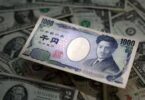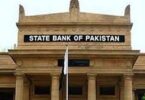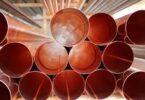MOSCOW (RIA Novosti): The cost of fertilizers by the end of the year may increase by 70%, follows from the report of the World Bank (WB).
“The fertilizer price index rose by almost 10% in the first quarter of 2022 (on an annual basis – Approx. ed.), Following last year’s trend, when fertilizers rose by 80% (yoy – Approx. ed.) due to interruptions in supply and trade restrictions in China. Fertilizer prices are projected to rise by nearly 70% in 2022 before falling in 2023,” the document notes.
The main reasons for this dynamics were a sharp increase in production cos-ts, disruptions in supplies from Russia and Belarus and the extension of export restrictions by China.
Nitrogen fertilizer prices have risen more than since the 2008 crisis, the report notes.
“The surge in prices that began last year also reflects the decline in production that occurred in response to a sharp increase in commodity prices and restrictive trade policies. In Europe, production was sharply reduced due to rising natural gas prices,” the authors of the analysis note.
Prices for phosphate fertilizers, according to the WB, increased by 11% in the first quarter of 2022, which was facilitated, among other things, by the rise in the price of ammonia and sulfur. Russia – the largest exporter of both sulfur and ammonia – is experiencing logistical problems due to the conflict in Ukraine, which is negatively affecting the entire global supply chain, the report says. China, which accounts for up to 30% of all phosphate trade, has imposed a ban on the export of this product until June 2022. Russia also extended the ban on the export of ammonium nitrate outside the EAEU.
“Phosphate fertilizer prices have nearly doubled in 2021. Prices are forecast to rise another 50% in 2022 and then decline in 2023 if new capacities are launched in developing countries and restrictive measures are lifted. In addition reducing pr-oduction costs, the outlook depends on whether China resumes exports after June.
Potash prices in the first quarter of 2022 rose by almost 80%. The authors of the document also link this to geopolitical events.
“In addition, from Feb-ruary 1, 2022, Lithuania h-as banned the transit of p-otash from Belarus via its railways. It is predicted that in 2022 potash prices will be on average 1.5 times hi-gher than in 2021 and will remain high in 2023 if supplies from Russia and Bela-rus do not return to the wo-rld market,” report added.
After the start of a special military operation to denazify and demilitarize Ukraine, Western countries stepped up sanctions pressure on Moscow. First of all, restrictive measures affected the banking sector and the supply of high-tech products. Many brands have announced their withdrawal from Russia.
The Kremlin called these measures an economic war, but stressed that they were ready for such a development of events. The Bank of Russia takes measures to stabilize the situation on the foreign exchange market; payments for gas supplies to unfriendly countries were transferred to rubles. In addition, the government has prepared a plan to counter restrictive measures, which includes about a hundred initiatives. The amount of its funding will be about a trillion rubles.
The sanctions pressure on Moscow has already turned into economic problems for the US and Europe, causing a serious increase in fuel and food prices.






